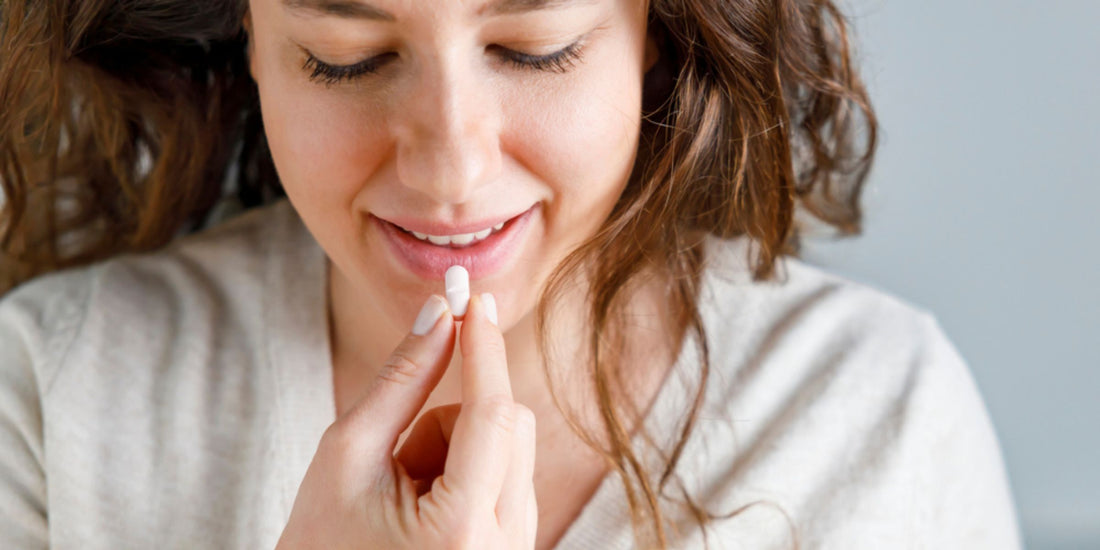Fortunately, taking a probiotic alongside a course of antibiotics can help reduce the negative effects on gut bacteria and decrease the risk of common gastrointestinal side effects. But is it best to take probiotics before, during or after antibiotics to restore the gut?
When is the best time to take probiotics with antibiotics?
For the best results, it is generally recommended to start taking a probiotic supplement when you commence and throughout the entire antibiotic treatment course, preferably also for two weeks afterwards. Starting probiotics as early as possible seems to provide the most benefit, though starting them at any stage is better than not taking them at all. To avoid any interactions, try to separate the dose of your antibiotic and probiotic by at least 2 hours where possible. It doesn’t matter which one is taken first. It’s important to look for probiotics that are specially formulated for use alongside antibiotics and are of high quality.
Following the use of gut restoration probiotics, you can switch to a probiotic specially made for everyday gut health, immune support or general health & wellbeing.
How do probiotics help?
Antibiotic use, especially prolonged or multiple courses, can have negative effects on the gut microbiome, affecting both the numbers and the diversity of beneficial bacteria. There is evidence that this disruption can last for up to two years after antibiotic treatment.1 Taking probiotics alongside a course of antibiotics has been found to preserve the diversity of gut flora and diminish the changes to gut microbe composition.1
Can taking probiotics help with antibiotic side effects?
More than a third of people taking antibiotics develop uncomfortable gastrointestinal side effects like diarrhoea or vaginal thrush (candida), which can occur at the time of antibiotic use and for several months after.2 Most likely caused by a disruption of gut flora that normally acts as a barrier to infection. Probiotics have been shown to reduce the occurrence of diarrhoea and stomach upset associated with antibiotic use in both adults and children. There are also probiotics specifically formulated to support healthy vaginal flora & maintain a healthy balance of bacteria and yeast that are native to the female microbiome.2
Which probiotic strains should you take with antibiotics?
When choosing a probiotic to pair with your antibiotic, it is important to look for research-backed strains at an effective therapeutic dose.
- Lactobacillus rhamnosus GG (LGG®) is one of the most well-studied probiotic strains and has been shown to be effective in restoring gut flora balance during and after taking antibiotics and helping to reduce the risk of antibiotic-related diarrhoea.3 LGG® is well adapted to survive in the gut and works to protect against illness-causing pathogens, maintains the balance of gut flora and regulates immune responses.
- Bifidobacterium animalis SPP lactis (BB12®) has been shown to enhance the recovery of gut microbe populations after antibiotic use.4
- Saccharomyces boulardii is a probiotic strain that has been shown in clinical trials to be effective in reducing the risk of diarrhoea in adults and children taking antibiotics. A meta-analysis found saccharomyces reduced the risk of diarrhoea in adults treated with antibiotics from 18.7% to 8.5%. In children, the risk dropped from 20.9% to 8.8%.5
- The combination of LGG®, BB12® and lactobacillus acidophilus in a specialised fermented milk drink was shown to significantly reduce the risk of gastrointestinal side effects in patients treated with antibiotics.6
Inner Health has a range of probiotics with science-backed formulas to assist with restoration during and following antibiotic use.
Will eating probiotic foods have the same effect?
Fermented foods such as kimchi, kefir, sauerkraut and yoghurt are great sources of beneficial bacteria that can be included regularly for general gut health. However, these are unlikely to provide a therapeutic dose of probiotics needed to re-establish gut balance and reduce gut side effects if you are taking a course of antibiotics. For optimal impact, a specialised probiotic supplement should be taken to restore gut health.
References
- Fernández-Alonso M et al, 2022, ‘Effect of adding probiotics to an antibiotic intervention on the human gut microbial diversity and composition: a systematic review’, J Med Microbiol, vol 71, no 11
- Hempel S et al, 2012, ‘Probiotics for the prevention and treatment of antibiotic-associated diarrhea’, JAMA, vol 307, pp1959–1969
- Szajewska H et al, 2015,’Systematic review with meta-analysis: Lactobacillus rhamnosus GG in the prevention of antibiotic-associated diarrhoea in children and adults,’ Aliment Pharmacol Ther, vol 42, no 10, pp1149-57
- Merenstein, Daniel et al, 2021, ‘Bifidobacterium animalis lactis BB-12 Protects against Antibiotic-Induced Functional and Compositional Changes in Human Fecal Microbiome’, Nutrients, vol 13, no 8, p2814
- Szajewska H et al, 2015, ‘Systematic review with meta-analysis: Saccharomyces boulardii in the prevention of antibiotic-associated diarrhoea. Aliment Pharmacol Ther, vol 42, no 7, pp793-801
- Wenus C, 2008, ‘Prevention of antibiotic-associated diarrhoea by a fermented probiotic milk drink’, Eur J Clin Nutr, vol 62, no 2, pp299-301




